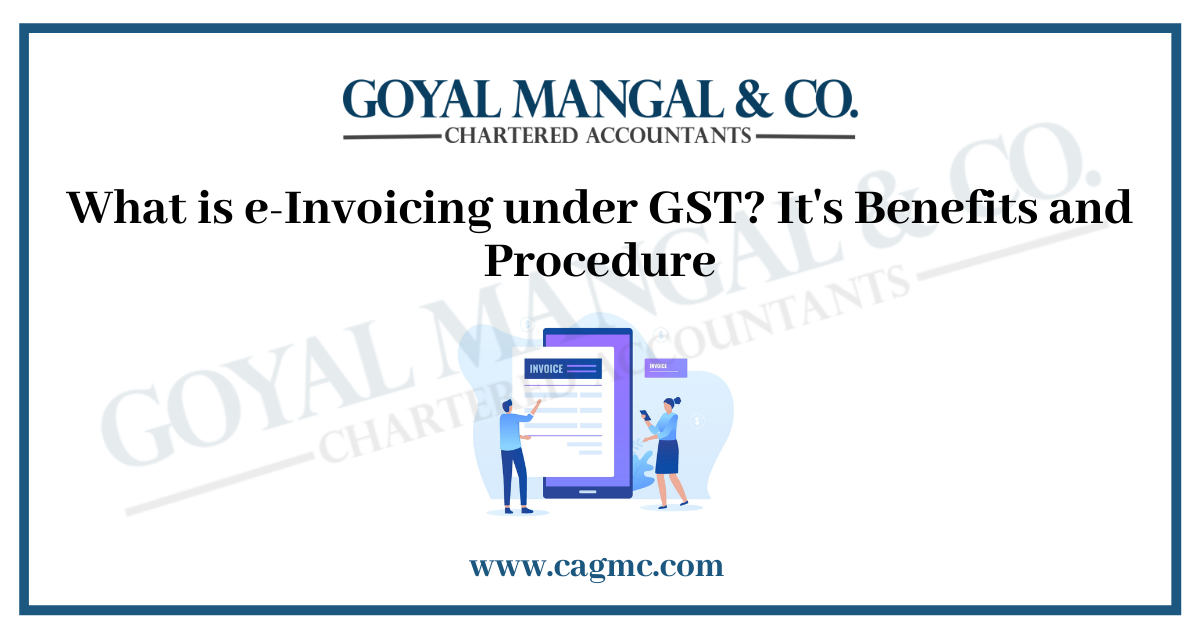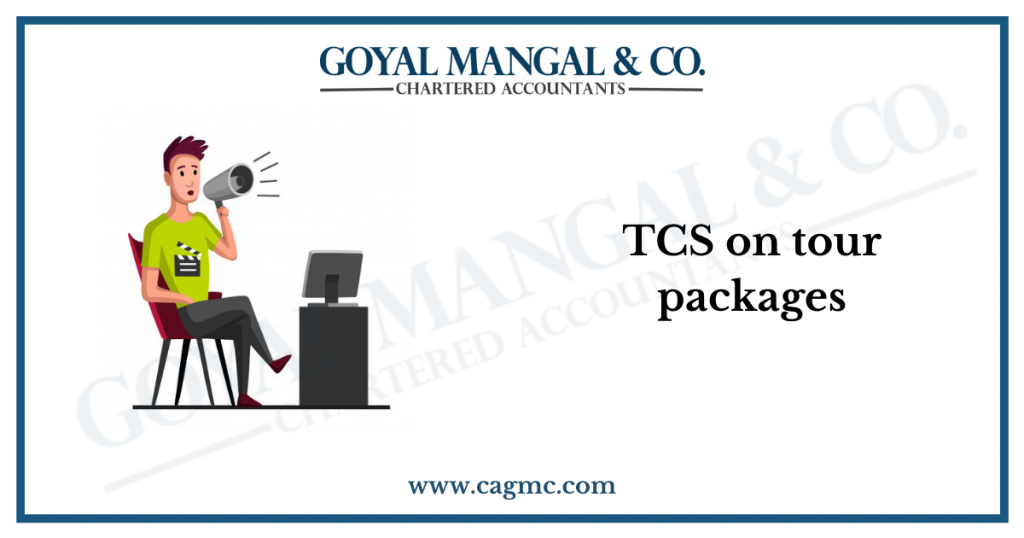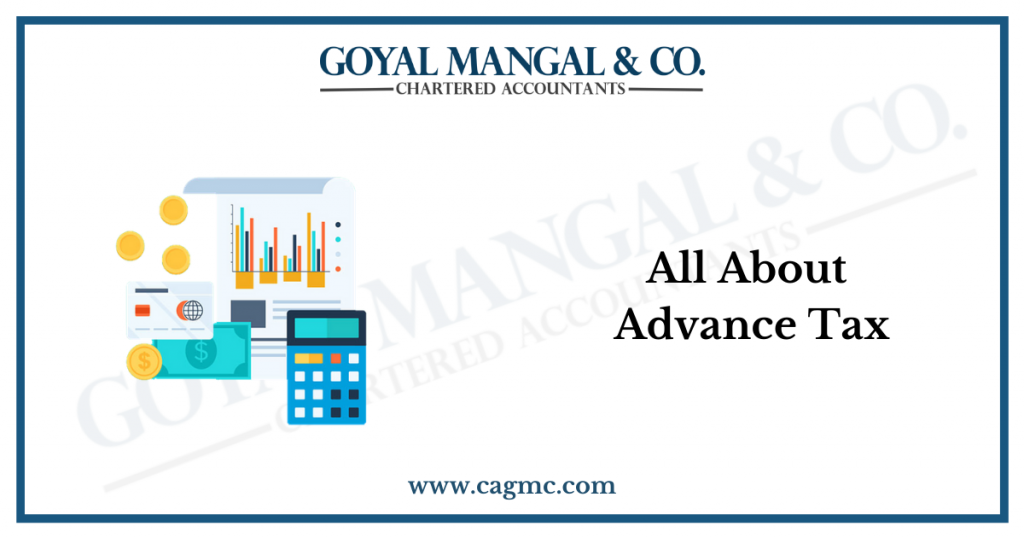
Are you planning to start your own Business? There are many things that you need to keep in mind before starting your own business. Knowledge is power. Further, there is nothing better for a businessman than to be prepared. In India any business with a turn over of more than Rs. 20 crores has to do it. Even if your business has not started give a turn over of more than that. It is a good practice to make e-invoices. It can help you with filing your business Income Tax Returns. It is an online procedure that helps in claiming GST returns. In this article, we will discuss What is e-Invoicing under GST? It’s Benefits and Procedure
|
Table of Content |
What is E-invoicing?
An e-Invoice is a Tax invoice that all registered taxpayers usually generate. Further, it contains some additional data in the form of a QR code. The Tax Invoice is produced through some accounting software. The file is made in JSON format. Further, the file is transmitted to the Invoice Registration Portal (IRP). The IRP validates the information and generates a Unique Invoice Reference Number for Each Invoice (IRN). Further, they also add a QR code. The IRP then sends the JSON file back to the business.
The IRP does not generate the Invoice. They just receive the file and validate it. Further, they attach a QR code, IRN and return it back to the business. The GST Network (GSTN) manages the IRP. The generated e-Invoice is for further use on common GST portals.
Applicability of e-Invoicing
Since 01-04-2022, e-Invoicing is mandatory for anyone who has an annual turnover of more than 20 crores in any of the previous financial years from 2017-18 onwards. It is applicable to the supply of goods or services or both. Further, it also applies to exports. In essence, e-Invoicing is applicable to,
- B2B transactions only
- Supplies to SEZ Unit
- Deemed Export
However, there are certain categories that do not need to file e-Invoices irrespective of their annual turnovers. These categories are,
- A Financial Institution, Insurer or Banking Company
- Goods Transport Agencies
- Passenger Transportation Services provided by a registered person
- A registered person providing a service of admission to an exhibition of cinematic films in multiplexes
- An SEZ unit
- Government departments and local authorities
How e-Invoicing Attains its Objective?
The main goal of e-Invoicing is to reduce tax evasion. It achieves this by doing the following,
- Authorities will have access to transactions in real-time
- There is much lesser scope for manipulating invoices. This is because it is generated before a transaction is completed
- It reduces the chance of fake GST invoices by making it easier for GSTN to track credit details.
Benefits of e-Invoicing to Your Business
e-Invoicing eliminates the need for manually entering data while filing GSTR-1 returns. Further, there are many more ways by which it can help your business. Here are some of those,
- It will resolve the major problem of data reconciliation that leads to mismatch error
- It is cross-compatible across different software
- Also helps in reducing data entry errors
- You can track the Invoices prepared in real-time
- It will enable backward integration and automation of the tax returns filing process
- You can also avail your tax credits faster
- It reduces the possibility of audits by the tax authorities.
Process of getting an e-Invoice
You will go through the following stages while generating an e-Invoice,
- You have to configure your system to meet the PEPPOL standards.
- It has to meet the mandatory parameters set by the CBIC
- There are two options by which you can generate IRN
You can get the IP address of your computer whitelisted on the e-Invoice portal. This will allow you for direct API integration. Otherwise, you could integrate via a GST Suvidha Provider (GSP)
Or, you can download a bulk generation tool. This tool will allow you to upload JSON files to the IRP in bulk. Hence, you can generate IRNs in bulk. - You have to raise a regular invoice on your software. The invoice must have all the regular details such as billing name, address, GSTN, transaction Value, etc.
- You have to upload the details to the IRP using a JSON file or via an application service provider or through a direct API.
- The IRP will validate the details of the B2B invoice.
- Then it will generate an IRN and create a QR code. It will assign these to the file.
- Then it will send the authenticated payload to the GST portal for GST Returns.
- The GSTR-1 of the seller will get auto-filled for the relevant tax period.
Mandatory Fields in an e-Invoice
There is a total 138 fields in an e-Invoice in 12 sections and six annexures. Out of the 12 fields, 5 are mandatory. Further, 2 annexures are also mandatory. The following fields are compulsory in an e-Invoice,
- Document Type code – The type of document has to be specified
- Suppliers Legal Name – The Name of the supplier has to be as per their PAN details
- Supplier’s GSTIN
- Supplier Address
- Supplier Place – The supplier’s location such as city/town/village must be mentioned
- Supplier State Code – The state code of the supplier must be selected from the latest list given by the GSTN
- Supplier Pincode
- Document Number – You have to give each document a unique sequential number to make it easier to identify.
- Preceding invoice Reference and Date – If your invoice has been amended by a subsequent document then you have to provide the details of the original invoice.
- Document Date
- Recipient Legal Name – The name of the buyer as per PAN
- Recipient’s GSTIN
- Recipient State Code
- Recipient’s Address
- Place of Supply State Code
- Recipient’s Pincode
- Recipient Place
- IRN
- Shipping-to GSTIN – You have to provide your GSTIN or the GSTIN of the person to whom the particular item is being delivered
- Shipping-to State, Pincode and State Code
- Dispatch-from Name, Address, Place and Pincode
- Is it a Service? – You have to mention if it is a supply of service or not
- Supply State Code – A code is used to identify if the transaction is B2B or B2C or Supply to SEZ (Export)
- Item Description
- HSN Code
If the HSN code ID applicable to the particular goods/services you have to mention it. - Item Price – The price of the item excluding GST has to be mentioned
- Assessable Value – You have to mention the price if you have given any discount on the item
- GST Rate
- IGST, CGST and SGST Values Separately
- Total Invoice Value
Conclusion
You should know about e-Invoicing as it makes it much easier for you to claim your GST returns. If your business makes a turnover of more that 20 crores then you have to comply with it. Though having a turnover of 20 crores may seem to be a long way out. Especially, if you are just starting your business. However, knowing about it will help you make decisions to grow the business.


